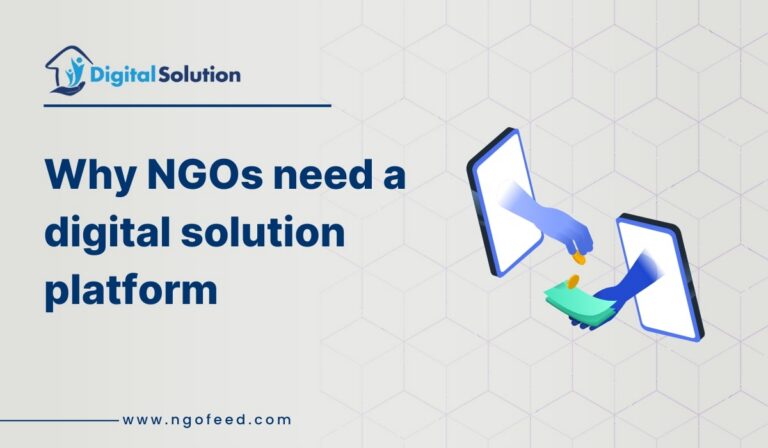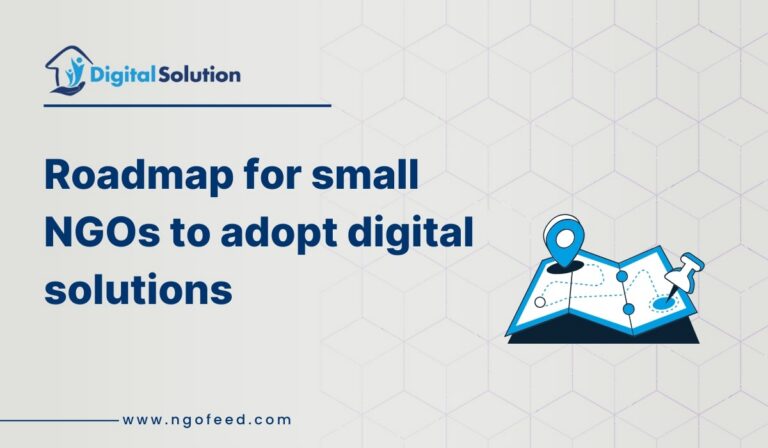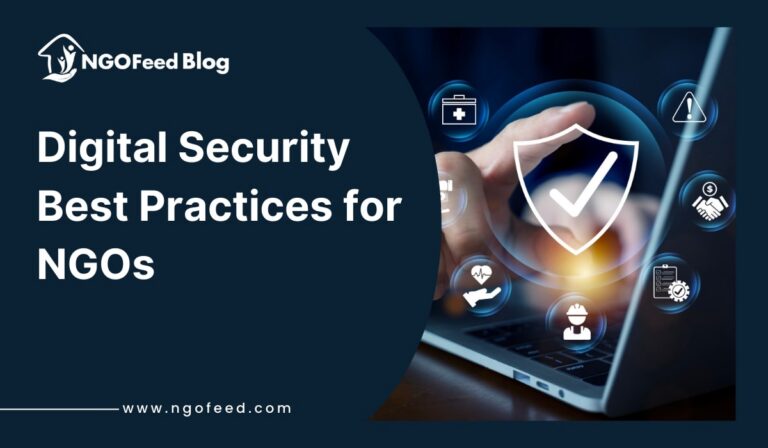How to Build a Strong Email Marketing Strategy for Your Nonprofit: A strong digital marketing strategy can help grow your business. No doubt. And if you want to maintain a deep connection with your donor you need a good platform to stay connected. Here comes Email Marketing into the picture.
What are the things your non-profit wants? Volunteers, Donors, sharing your mission and vision, and engaging with your audience, are the things every Nonprofit wants. Nonprofits battle with different obstacles when trying to connect and resonate with their audiences. Contrary to profit-driven companies emphasizing sales, nonprofits work to enhance visibility, gather funds, and rally support for their mission.
Email marketing is sometimes underestimated and not utilized enough. Email marketing can play a crucial role in determining your nonprofit’s success. If not done right, potential supporters might decline unknowingly.
Table of Contents
How to Build a Strong Email Marketing Strategy for Your Nonprofit
Here is a brief discussion on how you can strategize your email marketing –
Know your Marketing Objectives
NGOs in India work for society’s welfare and their objectives are different when it comes to marketing The main objectives for nonprofits might be:
- Raising funds: One of the main goals of your email marketing is to raise funds to support some causes, conduct events, and campaigns.
- Spreading Awareness: educating your audience about key issues in your society or alerting your followers about your organization’s mandate.
- Finding Volunteers: Encouraging your local area to volunteer and participate in programs that can add some value.
- Retaining Donors and Members: Making ties to maintain the previous donors, members, and readers.
- Promoting Events: To invite people to community events, fundraising balls or to attend an online seminar.
Recognizing these objectives allows you to target and control the content of your appeal in the course of sending emails and achieve the desired result.
To Know your Target Audience
Your Nonprofit is likely to target different groups of people, all of which are inspired by different messages. Email List segmentation means categorizing your email list based on different types of audience. This is why it’s important to understand who your audience is –
- Donor Groups: you should distinguish the first-time donors, the donors who have previously donated, the large donors, and the repeated donors. Every group requires a different set of messages and approaches that will interest them.
- Volunteer Groups: Target your current volunteers to share information, and appreciation, and motivate new volunteers to share success stories of improvement.
- The General Crowd: Help raise awareness of your enterprise’s average subscribers through newsletters containing powerful narratives, transformational messages, and opportunities to assist or participate.
Also Read: How Digital Presence is Bridging the Gap Between Urban and Rural NGOs
The ability to change the content of the communication and how you appeal to supporters through segmentation is a powerful tool in increasing general engagement and the quality of your relationships with supporters.
When the goals are properly defined and the subscribers are properly segmented into parts, email marketing campaigns are much more effective.
Craft your Content Well
Your email marketing success depends upon the content that you craft. Improving your nonprofit’s email marketing plan depends on how enjoyable and engaging your email text is. Here are the top points you should keep in mind while crafting your content-
- Eye-Catching Subject Lines: The subject line is the readers’ first glimpse, and often decide whether they’ll read the email or not. Create subject lines that convey the message directly and in short.
- Emotionally Inviting: Use words that spark emotions, urgency, and joy.
- Customized: this can be done by inputting the recipient’s name or targeting a particular interest can increase open rates.
- Involving Visual Text: The wording in your email should catch the reader’s attention and spark their interest. Use fascinating graphics, facts, and videos to communicate your message effectively.
- Narrating: Narrate powerful tales that showcase your nonprofit’s aims and results. Storytelling elicits emotional bonds and motivates readers to act.
- Brief and Clear Messages: Be direct and prompt in conveying your points. Long, wordy emails may make readers sleepy.
- Transparent and Practical CTAs: Every single email should have a specific objective which is supported by exceptionally visible CTA buttons. Your CTAs should be: Task-Focused: You should employ simple terms in your CTA tags such as “Donate Now”, “Join Us” or “Find Out More”.Ensure your CTAs are set out differently from the copy.
- Uncomplicated and User-Friendly: Keep the format of instruction simple to avoid putting the reader off or making them lose focus.
Appealing email text creates an immediate neat feeling, appeals to emotions, and guides the reader on taking significant required action.
Also Read: How LinkedIn Ads Work for NGOs 2024
Making your Email Campaigns effective
The main motive of these emails is to assist a nonprofit in reaching its objective. This could be fundraising, advertising events, or reaching out to your audience or fan base. Here’s a quick guide on how to design effective email campaigns:
- Welcome Series: Trigger emails that introduce you and your organization as well as update new subscribers about the impact that you create in society and how they can get involved.
- Regular Newsletters: Always update your supporters on new developments through newsletters. project status and progress information, new community development, and success stories.
- Fundraising Appeals: There ought to be particular and different emails for distinct kinds of fundraising campaigns. Be sure to specify the call to action in this case.
- Event Promotion and Follow-Up: Use email to provide your supporters with information about your events and to remind them about the events that are coming up. Ensure that you follow them up with emails after every event.
Automation of your Emails
Automating your Emails is a time-saving tool. Working for a nonprofit means theclock is always ticking. But, with automated emails, you can stay connected with your people and manage other tasks too. Research says automated emails can save you precious hours every week and increase the reply rate and engagement by a whopping 250%. The simplest emails to automate? Welcome, thank you, and retention emails. Some automated emails include-
- Greeting New Subscribers: Fire off a warm e-mail series to those just subscribing.
- Appreciating the Contribution of donors: Express thanks to donors right after they donate.
- Post-Volunteer Sign-up: Share crucial info and appreciation post someone’s volunteer registration.
When someone joins your email list or makes their first donation, it’s an excellent time to start them on an automated welcome series. Here’s your chance to tell them about your nonprofit and how they could make a real difference.
Also Read: Did you know how to do Nonprofit Marketing Strategy 2024
Automated emails provide several advantages for nonprofits:
- Save time and maintain Consistency: sending automated emails is a great time-saving technique and also ensures regular contact without much effort.
- Custom Messages for a Larger Crowd: These emails allow the nonprofits to create mass messages at once while maintaining their personal touch which can make these messages more personal.
- Prompt and Appropriate Communication: Trigger-based emails react to supporters’ actions (like donating or signing up), helping create deeper relationships.
- Boosted Supporter and Volunteer Loyalty: Drip campaigns connect with supporters regularly with valuable content, improving dedication and keeping more people involved. Increased Activity Levels: Regular and custom-made emails through automation can keep your audience interested and eager to help.
Keep Analyzing Your Strategy
Keep tracking your strategies from time to time to obtain desired results. Tracking your performance can help you know what changes you need to make in your marketing and what’s working for you. Here is how you should analyze your strategy-
Key Performance Indicators (KPIs)
You can use this indicator to understand how your emails are performing and track essential metrics, including:
- Open Rates: Percentage of people who actually read your email. They show how much your subject lines entice your subscribers and how much your subscribers are interested in your content.
- Click-Through Rates (CTR): The percentage of readers who act by clicking a link within your email. It shows you the performance of your call-to-action (CTA) and the content you put out there.
- Conversion Rates: A performance measure of how many people in the sample respond to the call to action or the people sign up for a certain service or product. This metric will indicate how effective you are in directing people to your emails and what they do when they get there.
- Unsubscribe and Bounce Rates: These must be tracked to determine the health and relevance of the given email list. Such levels suggest problems with targeting, messages, or the list.
2. Conduct A/B Testing:
This means sending two different types of emails to test which type will be most effective in reaching out to the target consumers. You can test:
- Subject Lines: Some other ideas are testing different styles, tone, or the length of the email to find out which one brings a higher open rate.
- Content Layout: If you are not sure which visuals to use, where to place a text, or how long the email should be, try different versions and see which one increases the number of clicks.
- Call-to-Action (CTA): Experiment with the words used, the color of the button, and even the location of the button to change the rate of conversion.
- Send Times: Try a variety of days and times since some of the days are likely to receive higher engagement than others.
Also Read: Why Nonprofit Organizations Need Website
3) Leverage Insights to sharpen Strategy
This approach means that through insights, it is possible to sharpen the strategy.When you are collecting information, the next step should involve sorting it to discover various aspects that need improvement. Use the insights to refine your strategy by:
- Adjusting Email Frequency: Discover the best approach: how to be present in a recipient’s inbox but avoid becoming annoying.
- Improving Content Relevance: Interpret interesting data in your content and serve it to the audience that is interested in that kind.
- Optimizing CTAs and Visuals: A/B tests your entire campaign and makes adjustments in terms of the button copy and design, images, and the overall message.
Keep Checking and Fixing Email marketing never ends. Always look at your numbers and replan your goals and strategies. Adjust to what your audience starts to like. By constantly tracking important numbers, doing A/B tests, fixing strategies using data, and automating changes, nonprofits can always make their email marketing better and create bigger impacts.
Why Email Marketing is beneficial for Non-profits?
Email remains essential in the communication process for non-profit organizations because it is direct, cheap, efficient and effective in the achievement of defined goals and objectives. Here are the main reasons why email marketing is essential for nonprofits:
1. Cost-Effective Outreach
Many nonprofits have fewer resources for their marketing campaigns, and via emails, they can achieve good outreach without the overhead costs of other types of advertising. It also is easier and cheaper than conventional forms of advertising, such as direct mail or advertisements, making it a perfect fit for organizations with limited funding.
2. Surge Campaigns for one-to-one communication with supporters
Email is one of the most efficient ways to reach out to a nonprofit’s donors through direct messaging and can easily be used to separate audiences based on type of interest, previous giving, or level of involvement. This resulted in increased donor loyalty and participation.
Also Read: How to do Digital Marketing for NGOs 2024
3. Strengthens relationships with Donors
Weekly newsletters are another method of keeping donors updated with information on the nonprofit, its achievements, and accomplishments. Using email to share experiences, progress reports, and words of appreciation will help the nonprofits cultivate the existing relationships with the donors and build new ones.
4. Drives Fundraising Efforts
Email is also perfect for running time-bound appeals for funding, whether as a seasonal appeal, emergency, or recurring appeal. Email marketing can prompt the supporters to donate as the message is appealing to their emotions through calls to action.
5. Encourages advertisement of events, and volunteering.
Organization of Events and volunteer participation contribute to nonprofit organizations’ success. Overall, organizations are able to send out information with regards to events such as the next event, reminders and follow up hence enhancing correspondence and probably increasing the turnout of people in their community.
6. These preparations help to underpin awareness of mission and advocacy.
We know that email marketing enables efficient and constant dissemination of the mission, values, and achievements of a nonprofit organization. When nonprofits share educational content, success stories, and seemingly unending requests, they create a platform for advocating for their noble causes and inspiring people to support those noble causes.
7. Data-Driven Decision Making
When using email marketing, the accomplishments of important benchmarks such as the open rate, click-through rate, and conversion to actions can be easily measured. Such data shows the organization what issues their audience is interested in and what can potentially be adjusted to achieve better outcomes.
Also Read: How to do Social Media for NGO
Key Takeaway
Email marketing is truly essential for nonprofits because the channel targets members and donors directly and is highly cost-efficient and measurable for raising funds, marketing events, and missions.











